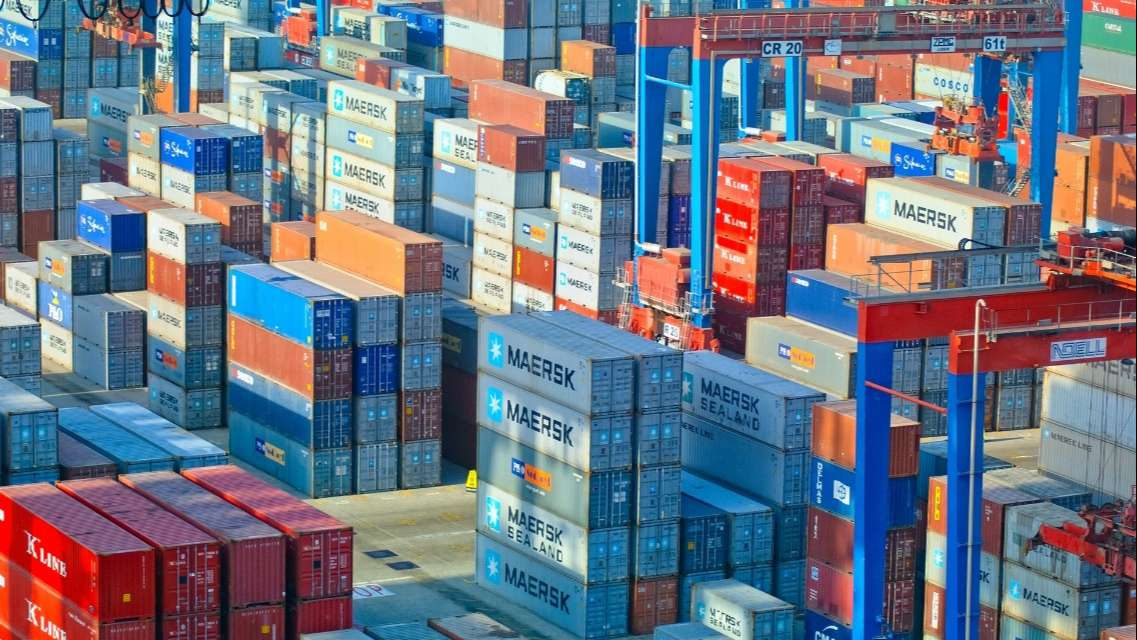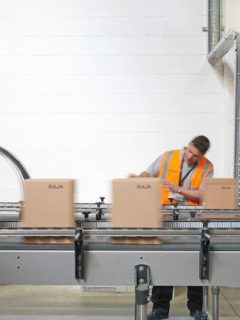Stacking bins are ideal for creating stable, nestable and foldable storage units. Empty , they can be slid into each other and save a lot of storage space. Full, they form a solid block for palletising. Stacking bins are therefore a major asset for handling, storing and shipping goods
what is stacking?
Stacking is a term often used in storage and shipping warehouses. It involves stacking containers to facilitate the transit of goods or to optimise storage and space in a warehouse. Stacking binsare made of plastic and can be stacked on top of each other without the risk of crushing.
The different types of bins
-
Stacking bins with perforated or wire mesh: they offer optimal ventilation for your products, even when stacked, and also allow you to partially view the objects contained inside;
-
Solid bins: hermetic, they are ideal for palletising and comply with European standards. They can be fitted with open or closed handles and lids. They are also resistant to temperatures ranging from -10 to +80° +80 °C ;
-
Tilting bins: these bins are especially recommended for handling because they make it easier to hold and tip the products;
-
Beaker bins they give an immediate view of the product and are recommended for the storage of supplies, spare parts, greasy or wet parts thanks to their great resistance;
-
Foldable bins: often in the form of a box pallet, the foldable bin is ideal when it has to be returned to the warehouse after delivery or when it is not used immediately; when folded, it can be stored easily and takes up less space.

Accessories for stacking bins
Whether
-
Dividers;
-
Name labels to better identify products;
-
Interlocking lids to protect products from the air;
-
Self-locking lids to prevent the bins from opening;
-
Wheels;
-
Drain taps to drain liquids.
les caisses-palettes gerbables
Les caisses-palettes sont spécialement conçues pour être palettisées : grâce à leurs poignées et à leurs pieds espacés, elles offrent une manutention facile par transpalette ou élévateur.
Ces bacs permettent d’envoyer de gros volumes, par palettes entières ou mixtes. Elles s’empilent les unes sur les autres selon leur taille (si les tailles sont différentes, il faut diviser la palette selon les tailles des caisses).
Les différents supports pour bacs gerbables
Pour offrir un gain d’espace substantiel, encore faut-il que les bacs gerbables trouvent le support adapté dans l’entrepôt.
C’est ici que les rayonnages rentrent dans le jeu d’optimisation de l’espace: très importants au sein de l’entrepôt, ils permettent de stocker de façon intelligente et de faciliter la circulation des marchandises.

-
Galvanised steel shelving: it does not rust, can support up to 170 kg per shelf, and is ideal for spouted bins;
-
Chipboard shel ving: ultra robust with large storage dimensions;
-
Pallet racking: with a height of 3 m, this rack is specially designed for the storage of pallets, where stackable pallet boxes can be installed.
le bon fonctionnement d’un entrepôt dépend avant toute chose du rangement des produits et de la facilité de déplacement des marchandises.
Les rayonnages et les bacs sont essentiels pour remplir cette fonction.

Comment bien utiliser les bacs gerbables ?
Si vos bacs doivent effectuer une navette aller-retour, mieux vaut alors opter pour des bacs gerbables pliables (le transport retour est souvent facturé en fonction du volume) ou des bacs gerbables qui s’emboîtent les uns dans les autres.
Il y a différents modèles de bacs conçus pour revenir chez l’expéditeur comme le bac empilable rotatif ou encore le bac à étriers.
Bien utilisés, les bacs gerbables contribuent à la bonne organisation de l’entrepôt en facilitant le rangement et les gestes de « picking » nécessaires à la manutention.
Pour concevoir des rangements uniformes, vous devez idéalement empiler des bacs de mêmes dimensions (si vous devez entreposer des produits différents dans le mêmebac
- Stacking is a storage/handling operation that consists of stacking plastic containers on top of each other to ensure that they are held securely on pallets or on shelving supports.
- There are different types of stacking bins, adapted to each use: perforated, wire mesh, spouted, transparent, folding, tilting.
- To make the best use of stacking bins, make sure you stack bins of similar dimensions: the more uniform the pallet, the stronger it will be and the better it will protect the goods during shipping.















